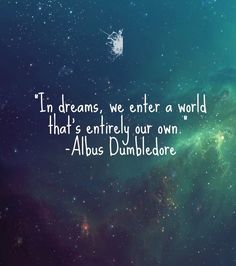The Psychology Of Dreams
Jul 28, 2019 • 43 views

Dreams are stories and images that our minds create, which are encountered when asleep. It is how our subconscious mind communicates with us. The key is to interpret the meaning of dreams. Dreams are a universal human experience. So whether we remember it or not, we all dream. Dreams have always fascinated everyone- be it scientists or psychologists or even us. Dreams are a normal part of sleep and shocking enough, we spend on an average of 6 years of our life dreaming! Some dreams can be happy, some can be sad; some are romantic, while some are simply bizarre. But what are dreams, what causes them, what are its types? Let us explore this wonderful world of dreams and get answers to some of our questions.
What Are Dreams?

Science explains that dreams are a state of consciousness characterized by sensory, cognitive and emotional occurrences during sleep. Dreams can have significantly different meanings when analyzed by the neuroscientific and psychoanalytic approaches. Neuroscientists study the structures involved in dream production, dream organization, and narratability. On the other hand, psychoanalysis is based on the meaning of dreams and placing them in the context of relationships in the history of the dreamer.
Why do we dream?
There are many theories that explain why we dream. Some researchers say that dreams have no significance or meaning, while others believe that it is necessary for mental health. Few of the reasons are noted below:
Dreams act as therapists by confronting the emotional dramas in our lives.
It helps the brain store important memories and information and get rid of the unimportant ones.
A dream is actually the brain responding to biochemical changes and electrical impulses that occur during sleep.
What are the different types of dreams?

1.Lucid Dreams
Has this ever happened to you that during a dream you are aware that you are dreaming? This is nothing but lucid dreams. In such a case, the dreamer may gain some control over the dream characters, narrative, and situation. Many dreamers have cultivated this skill so that they can explore how they can influence dreams.
2.Daydreams
Daydreaming is the level of consciousness between sleep and wakefulness. It occurs during our waking hours when we lose your sense of self. We may get detached from our current task and let our imagination carry us away. All this while, our consciousness keeps pulling us back to reality.
3.Nightmares
All of us might have faced this situation when we had a bad dream and wake up in a panic with our heart racing. This bad dream associated with negative feelings, such as anxiety or fear that awakens you is called a nightmare. More common in children below 10 years, nightmares may be a response to real-life trauma and situations.
4.Recurring Dreams
If you ever have a dream where storylines or themes that repeat themselves over weeks, months and even years, these dreams are called recurring dreams. They may be good or nightmarish depending upon the person and their experience. It usually happens when the conflict in the dream remains unsolved. Once the problem gets solved, the recurring dreams cease.
5.Prophetic Dreams
Have you ever experienced a situation that you have already seen in your dreams in the past? This phenomenon explains a prophetic dream. Also known as precognitive or psychic dreams, prophetic dreams are dreams that seemingly foretell the future. People have been fascinated by prophetic dreams since ancient times when they believed that prophetic dreams were actually messages from the gods or some supernatural force. Science explains that this phenomenon happens because our unconscious mind pieces together bits of information and observation that we normally overlook.
6.Healing Dreams
The dreams that help us learn something important about ourselves or something that we should do is called a healing dream. In short, healing dreams are life-changing dreams that indicate something important in our life.
7.Signal Dreams
As the name suggests, these dreams give us a signal as to what decisions we should make and help to solve problems in our life.
Amazing facts about dreams

Even blind people can dream. However, instead of seeing images, they use their other senses such as smell, sound, touch etc. to dream.
Dreaming is a universal phenomenon. So, everyone dreams. The people who think they don’t dream actually forget their dreams.
Unknown faces that we see in the dreams are actually people whom we have encountered in real life.
Not everyone dreams in colour. There is about 12 % of people who dream in black and white.
Not only humans but animals dream too. For example, if you see a dog twitching their paws while sleeping as if they are running, it means they are dreaming.
It is said that men and women dream differently. Usually, in a man’s dream, 70% of the characters are men. In the case of women, the dream character of men and women are equal.
Our brain is more active while sleeping than it is in the day.
Within 5 minutes of waking up, we forget 50% of our dreams. When it is about 10 minutes, 90% of our dream is gone.
In a dream, we commonly experience anxiety as negative emotions are more common than the positive ones.
Although there is no exact scientific proof for it, it is said that if you are snoring, you cannot be dreaming.
Hope your questions are answered by now. A dream is a topic that is still being studied. Researchers are still trying to get exact reasons for some unusual occurrences in the dreams. Apart from the scientific perception, dreams are something that catches the attention of everyone. So, keep dreaming because if you can dream it, you can do it!
